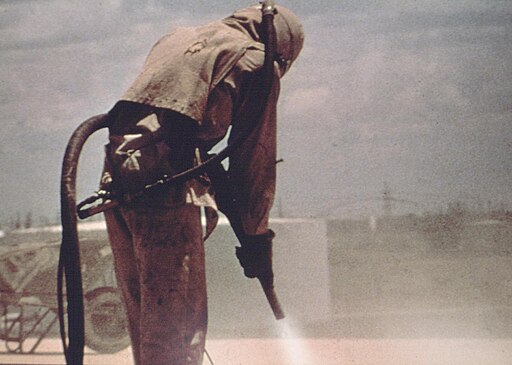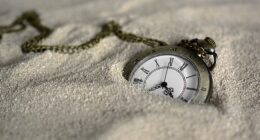Shot blasting is primarily used to clean or prepare the surface of a material by forcefully propelling abrasive particles against it. Shot peening is a specialized process designed to improve the fatigue life and strength of metal components. By bombarding the surface with small metallic shots or pellets.
TL;DR Shot blasting Vs. Shot peening
Shot blasting is used to clean, polish, or prepare surfaces by propelling abrasive particles against them, while shot peening is a specialized process that improves fatigue life and strength by bombarding surfaces with small metallic shots.
Shot blasting efficiently removes contaminants and prepares surfaces, while shot peening induces compressive stresses and work-hardens materials. Both processes have advantages like cost-effectiveness and environmental friendliness.
What is shot blasting?

Shot blasting is primarily used to clean, polish, or prepare surfaces for further treatment. The process involves the use of an abrasive material (such as steel shots) being forcefully propelled by compressed air or centrifugal force onto the targeted surface.
As these tiny particles make contact with the material, they effectively remove rust, paint, scale, and other unwanted contaminants – leaving behind a pristine canvas ready for its next makeover.
Shot blasting can also be employed to roughen up smooth surfaces in order to enhance adhesion for coatings and paints. it also can help relieve stress on metal components by removing surface imperfections like burrs or weld spatter.
What is shot peening?
Shot peening is a specialized surface treatment process that involves bombarding a material’s surface with small, spherical media, typically made of steel or ceramic. These small particles are propelled at high speeds using compressed air or centrifugal force.
The purpose of shot peening is to induce compressive residual stresses in the material, which helps to improve its fatigue life and resistance against stress corrosion cracking. By intentionally deforming the surface through controlled plastic deformation, shot peening can increase the strength and durability of various components.
During the shot peening process, each impact creates a tiny indentation on the material’s surface. Overlapping indentations create a pattern that resembles an orange peel texture.
This pattern promotes uniform distribution of stress throughout the component, reducing stress concentrations and preventing crack initiation and propagation.
Shot blasting Vs. Shot peening – Key differences
| Aspect | Shot Blasting | Shot Peening |
|---|---|---|
| Purpose | Cleaning surfaces by removing contaminants and impurities. | Improving the fatigue life and strength of metal components. |
| Objective | Surface preparation for painting, coating, or further processing. | Inducing compressive stresses and work-hardening the surface. |
| Impact Force | High-velocity abrasive particles are used to impact and clean the surface. | Smaller and rounded media particles are used to create controlled plastic deformation. |
| Material Removal | More aggressive process that can remove material from the surface. | Material removal is minimal, as the focus is on surface treatment. |
| Surface Finish | Leaves a textured and often rougher surface finish. | Results in a smoother and more polished surface finish. |
| Application Areas | Commonly used in industries like construction, automotive, and shipbuilding. | Primarily used in aerospace, automotive, and manufacturing industries. |
| Benefits | Effective for surface preparation, paint adhesion, and rust removal. | Enhances fatigue resistance, increases hardness, and improves component life. |
| Stresses Induced | Tensile stresses may be induced due to the impact of abrasive particles. | Compressive stresses are intentionally induced to improve component strength. |
| Parts Treated | Larger and sturdier parts like steel plates, bridges, and heavy machinery. | Precision parts, gears, springs, turbine blades, and aerospace components. |
Advantages and disadvantages of shot blasting
Advantages of shot blasting:
- Efficient surface cleaning: Shot blasting effectively removes contaminants, rust, scale, and old coatings, preparing them for further processing or coatings.
- Cost-effective: It is a relatively quick and automated process, reducing labor costs and improving overall productivity compared to manual cleaning methods.
- Versatility: Suitable for a wide range of materials, shapes, and sizes of workpieces, making it applicable in various industries.
- Surface roughening: Shot blasting can create a textured surface, improving adhesion for paints, coatings, and adhesives.
- Environmentally friendly: Shot blasting is a clean process, producing minimal waste, and can often be combined with recycling methods for abrasive media.
Disadvantages of shot blasting:
- Material removal: The process can lead to some material loss on the surface, reducing the thickness of the workpiece.
- Surface damage: Depending on the abrasive media used and the intensity of the process, shot blasting can cause damage or deformation to delicate components.
- Dust and noise: Shot blasting generates dust and noise, which can be hazardous to operators and require proper safety measures.
- Limited precision: Achieving precise and intricate surface treatments may be challenging with shot blasting, as it is a more abrasive and aggressive process.
- Hidden cavities: possibility of shot blasting media getting trapped in hidden cavities or crevices, which may cause issues in the future if not properly cleaned.
Advantages and disadvantages of shot peening
Advantages of shot peening:
- Increased fatigue life: Shot peening induces compressive stresses on the surface, enhancing the material’s resistance to fatigue and crack propagation.
- Improved component strength: The process work-hardens the surface, increasing hardness and strength of the material.
- Residual stress relief: It can counteract tensile stresses, reducing the risk of stress corrosion cracking and premature failure.
- Precision surface treatment: Shot peening can be controlled to target specific areas, making it suitable for critical components like aerospace parts.
- Environmentally friendly: It is a cold working process that does not require chemicals or hazardous materials.
Disadvantages of shot peening:
- Limited material removal: Shot peening has minimal material removal capabilities, so it may not be suitable for cleaning heavily contaminated surfaces.
- Skilled process control: Proper shot peening requires skilled operators and precise control over parameters to achieve the desired results.
- Surface roughness: Shot peening can introduce a rougher surface finish, which might not be ideal for certain applications.
- Surface coverage challenges: Ensuring uniform coverage on complex shapes can be challenging, potentially leading to uneven results.
- Cost and time-intensive: Compared to shot blasting, shot peening is generally a more specialized and time-consuming process, which may lead to higher costs.
Image Credits
Featured Image By – National Institute for Occupational Safety and Health (NIOSH) from USA, Public domain, via Wikimedia Commons
Image 1 By – What is the difference between shot blasting and shot peening?








